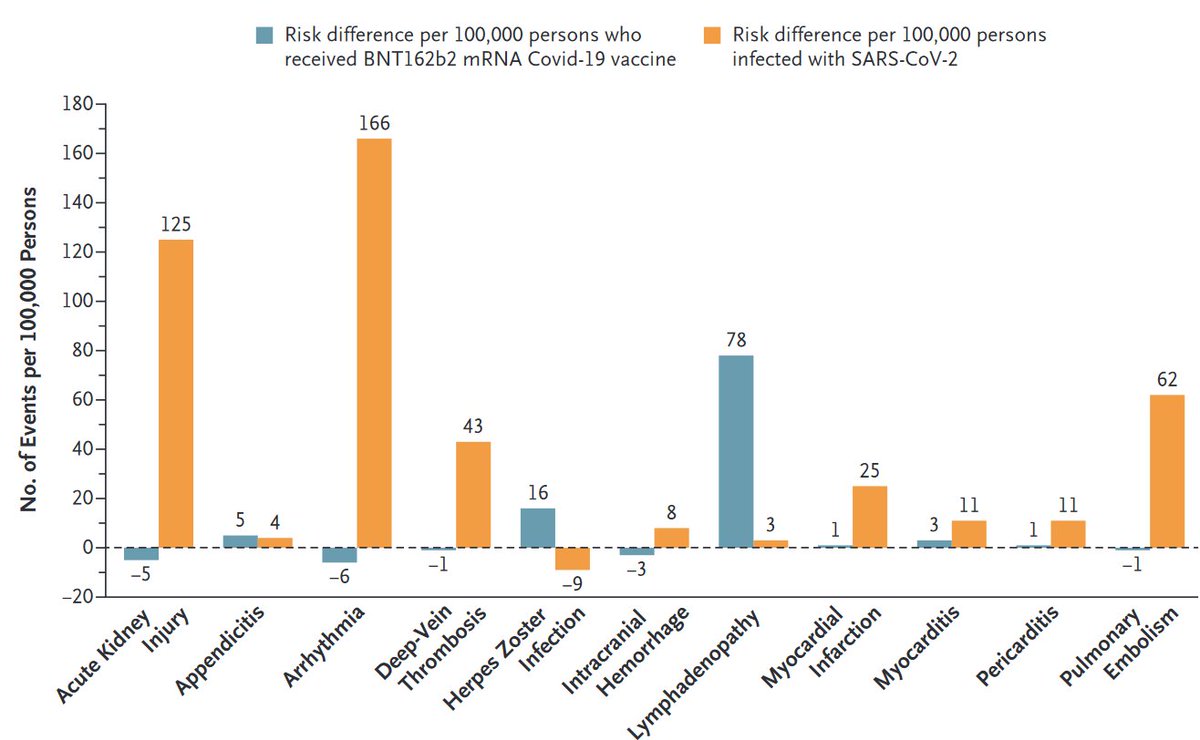BREAKING: Risk of #COVID19 hospitalization in 77,590 persons with #HIV by antiretroviral type:
TDF/FTC: 10.5
TAF/FTC: 20.3
ABC/3TC: 23.4
Other: 20.0
per 10,000 (Febr-April 2020)
WANTED: Randomized trials of TDF/FTC (Tenofovir/Emtricitabine)
doi.org/10.7326/M20-36…
TDF/FTC: 10.5
TAF/FTC: 20.3
ABC/3TC: 23.4
Other: 20.0
per 10,000 (Febr-April 2020)
WANTED: Randomized trials of TDF/FTC (Tenofovir/Emtricitabine)
doi.org/10.7326/M20-36…

That is, individuals on TDF/FTC had about half the risk of #COVID19 hospitalization than those on TAF/FTC or ABC/3TC.
Rate ratio 0.53 (95% CI 0.29, 0.95)
journals.lww.com/epidem/Citatio…
Any reasonable person should be concerned about confounding, so we did the following 3 things
👇
Rate ratio 0.53 (95% CI 0.29, 0.95)
journals.lww.com/epidem/Citatio…
Any reasonable person should be concerned about confounding, so we did the following 3 things
👇

1) We restricted the analysis to individuals younger than 60 years, who have the lowest prevalence of comorbidities.
Rate ratio of #COVID19 hospitalization: 0.55 (0.29–1.04) for TDF/FTC compared with TAF/FTC.
Confounding by comorbidities appears less likely now.
Rate ratio of #COVID19 hospitalization: 0.55 (0.29–1.04) for TDF/FTC compared with TAF/FTC.
Confounding by comorbidities appears less likely now.
2) We restricted the analysis to Madrid, the region with largest between-hospital heterogeneity in TDF/FTC use and the highest COVID-19 burden.
Rate ratio of #COVID19 hospitalization: 0.70 (0.28–1.76) for TDF/FTC compared with TAF/FTC.
Confounding by geography less likely now.
Rate ratio of #COVID19 hospitalization: 0.70 (0.28–1.76) for TDF/FTC compared with TAF/FTC.
Confounding by geography less likely now.
3) We compared individuals in hospitals that used >70%
of tenofovir as TDF/FTC vs. hospitals that used >70% of tenofovir as TAF/FTC.
Rate ratio of #COVID19 hospitalization 0.80 (0.41–1.56) for TDF/FTC compared with TAF/FTC.
Confounding by comorbidity even less likely because...
of tenofovir as TDF/FTC vs. hospitals that used >70% of tenofovir as TAF/FTC.
Rate ratio of #COVID19 hospitalization 0.80 (0.41–1.56) for TDF/FTC compared with TAF/FTC.
Confounding by comorbidity even less likely because...
... the distribution of comorbidities across hospitals’ health districts is expected to be similar and unrelated to the choice of tenofovir type.
Therefore differences in risk at the hospital level cannot be readily explained by individual-level confounding due to comorbidities.
Therefore differences in risk at the hospital level cannot be readily explained by individual-level confounding due to comorbidities.
These #observational analyses, plus various experimental findings (see paper), strengthen the hypothesis that TDF/FTC helps prevent serious #SARSCoV2 infection in HIV-positive individuals.
Strong rationale for #randomized trials like the ongoing #EPICOS:
clinicaltrials.gov/ct2/show/NCT04…
Strong rationale for #randomized trials like the ongoing #EPICOS:
clinicaltrials.gov/ct2/show/NCT04…
• • •
Missing some Tweet in this thread? You can try to
force a refresh








